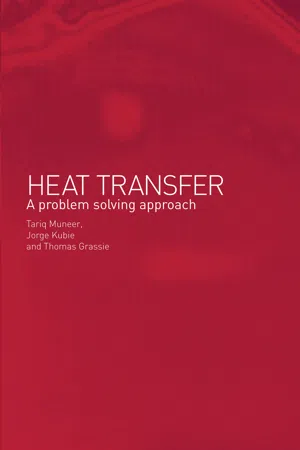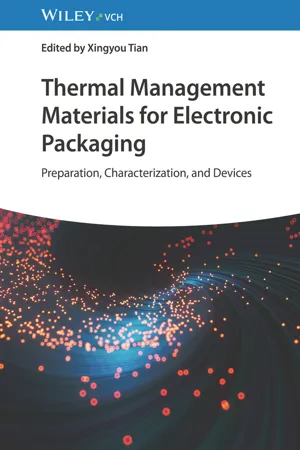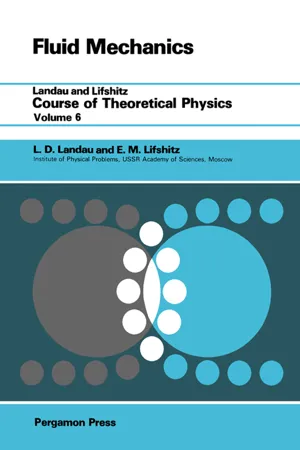Physics
Thermal Conductivity
Thermal conductivity refers to the ability of a material to conduct heat. It is a measure of how quickly heat can pass through a substance. Materials with high thermal conductivity can transfer heat efficiently, while those with low thermal conductivity are better insulators.
Written by Perlego with AI-assistance
Related key terms
Related key terms
1 of 4
Related key terms
1 of 3
11 Key excerpts on "Thermal Conductivity"
- Ishani Chakrabartty, Khalid Rehman Hakeem, Ishani Chakrabartty, Khalid Rehman Hakeem(Authors)
- 2024(Publication Date)
- Apple Academic Press(Publisher)
38 Therefore, the first and foremost confrontation in the current need for developments is to produce more unique green nanomaterials and devices with numerous utilizations, in the fields of medicine and electronics, etc. The influential green concept in nano-scale materials has admired immense consideration that delivers uniqueness against the traditional approach. Apart from the different processes or methodology of nanomaterials synthesis and applications, the green nanomaterials are defined as materials derived from the different bioresources, hence the term “Green.” Currently, green nanotechnology research specifically involves nanomaterial preparation from green resources, appropriate characterization for potential use in biomedical sector, micro-electronics, agribiotechnology, space science, energy, computer technology, and the environment. The modifications in the properties of nanomaterials are growing area for researchers to adopt them for utilizing in various fields.8.2 Thermal Conductivity of Materials: Background
Heat and temperature are very routine and frequently used terminologies in day-to-day life, which are directly associated with thermal energy. The microscopic vibrations of particles are called thermal energy. Heat is directly related to Thermal Conductivity. The measurement of a material’s ability to conduct or transfer heat is called Thermal Conductivity which determines its working temperature and the development of effective heating/cooling properties. Another definition of Thermal Conductivity is the rate of heat transferred by conduction through a unit cross-section area of a material when a temperature gradient exists perpendicular to the area.42 It is generally denoted by the symbol “k” or sometimes λ. Every individual material has its particular conducting capacity and heat transfer. The Thermal Conductivity of a material is explained by the following formula:K = Qd / AΔT- K = the Thermal Conductivity in Watt m−1 K−1
- Q = heat transferred quantity through the material in Joules/second or Watts
- d = the distance between the two isothermal planes
- A = surface area in square meters
- ΔT = the difference in temperature (Thot −Tcold )
The Thermal Conductivity of materials can be measured by two popular methods like Steady State Method (with constant temperature; Searle’s bar method and Lee’s dice method) and Transient State Method (with varied temperature; Plane source method, transient line source method, and laser flash method). The Thermal Conductivity of a material or element is a crucial property and can be calculated by scaling the rate of heat passed through a material. Most of the electronic applications that depend on heat (flow) extractions may require advanced material with specific Thermal Conductivity. The metals possess free electrons which carry heat/change to determine their Thermal Conductivity. Cooling of microelectronics and high-voltage devices is an important technical challenge. High Thermal Conductivity material can be utilized to increase cooling rates with various applications in integrated circuits, optoelectronics, and power plant industries.34- eBook - ePub
Nanomaterials, Nanotechnologies and Design
An Introduction for Engineers and Architects
- Daniel L. Schodek, Paulo Ferreira, Michael F. Ashby(Authors)
- 2009(Publication Date)
- Butterworth-Heinemann(Publisher)
In products, attention is invariably directed toward the way heat or extreme temperature differentials affect the design of the product and to assure that the product effectively continues to provide its intended role. In some cases, the surrounding environment might have extremes—especially high or low temperatures. Maintaining the functioning of a product in an extreme environment is not always an easy task, especially since many of the mechanical properties of materials, including strength and stiffness, are temperature dependent. In other cases, the role of a product might necessitate the inclusion of components that generate heat, which in turn must be managed. Often there must be components that mitigate heat transfer, provide cooling functions, or otherwise provide this heat management. In these design situations, the intrinsic thermal properties of materials are of fundamental importance. Heat affects not only mechanical properties but electrical and optical properties as well (see the following discussion).Basic Heat Transfer
In designing both types of thermal environments we’ve outlined, the fundamental means of heat transfer—conduction, convection, radiation—are of intrinsic importance (see Figure 9.9 ) as are the intrinsic thermal properties of materials. Chapter 4 addressed thermal properties in detail. Here we only briefly summarize salient issues to put the following discussions into context.Figure 9.9 Basic heat-transfer mechanisms. Heat is a form of energy associated with molecules in motion. Conductive heat transfer takes place in solids because of temperature differences between various parts of the solid. Thermal energy is transferred from hotter to lower regions via vibrations of adjacent molecules or the movement of free electrons through the material. Metals, with many free electrons, are good conductors of heat. Convective heat transfer takes place in a fluid (gas or liquid) through molecular motion and the circulation of currents. It can be divided into natural convection and forced convection. Natural convection is driven by the temperature gradients that cause density gradients in gases or fluids, and as a result of these phenomena, buoyancy forces occur and cause fluid movements. Forced convection is caused by the some external force (e.g., a fan or pump). Radiation is a flow of thermal energy from one source to another in the form of electromagnetic waves and does not depend on a specific medium of transfer. - eBook - ePub
Infrared Thermal Imaging
Fundamentals, Research and Applications
- Michael Vollmer, Klaus-Peter Möllmann(Authors)
- 2017(Publication Date)
- Wiley-VCH(Publisher)
heat flow. In physics, one usually distinguishes three kinds of heat flow: conduction, convection, and radiation. As a matter of fact, the underlying physical processes for conduction and convection are very similar, so the distinction is rather artificial.4.2.1 Conduction
Conduction refers to the heat flow in a solid or fluid (liquid or gas) that is at rest (Figure 4.2 ). Conduction of heat within an object, for example, a wall of infinitesimally small thickness ds, is usually assumed to be proportional to the temperature difference dT on the two sides of the object as well as the surface area A of the object, and inversely proportional to the thickness ds of the sample, that is,(4.1a )For the specific example of a macroscopic one-dimensional (1D) wall of thickness s = s1 − s2 , steady-state conduction leads to a temperature that varies linearly with distance. In this case,(4.1b )In what follows, we mostly refer to the simplified heat conduction equation . The heat transfer coefficient is defined as αcond = λ/s, where λ is the Thermal Conductivity of the wall material given in W (m K)–1 and s is the wall thickness given in meters. (Note that λ uses the same Greek symbol that is usually reserved for wavelength. Rather than introducing additional subindices that would unnecessarily complicate the notation, in particular when later a distinction between thermal conductivities for different materials – indicated by subindices – will be made, we will stick with the same symbol since the context of the corresponding equations will usually make it clear which quantity – wavelength or Thermal Conductivity – is meant.) The heat transfer coefficient αcond describes heat transfer in watts per unit area and Kelvin, that is, W (m2 K)–1 . Hence, the heat flux through the wall in watts gives the energy flow per second through the wall of surface area A if the temperature difference between the inner and outer surfaces is given. Table 4.1 gives typical values of thermal conductivities of materials as well as their corresponding heat transfer coefficients for s - eBook - ePub
Heat Transfer
A Problem Solving Approach
- Kubie Jorge, Tariq Muneer, Grassie Thomas(Authors)
- 2012(Publication Date)
- Routledge(Publisher)
∞ , but for external flows past solid bodies it can be closely approximated by the free stream temperature. Additionally, the heat transfer coefficient may not be easily determined and may not necessarily be constant. However, even with these limitations, this is a very versatile boundary condition.3.4 Thermophysical properties
Several important properties required for the analysis of conduction heat transfer have been already introduced: Thermal Conductivity k , density ρ , and specific heat c . These properties, together with additional properties discussed below, are collectively known as thermophysical properties . Two categories of thermophysical properties are generally considered: (i) transport properties and (ii) thermodynamic properties .Transport properties govern the rates of transfer of energy, momentum, and mass. For example, Thermal Conductivity k controls the diffusion rate of heat transfer and kinematic viscosity ν controls the diffusion rate of momentum transfer.Thermodynamic properties describe the equilibrium state of a system. For example, density ρ and specific heat c are two such properties.These and other thermophysical properties are extensively discussed in many available textbooks (Brodkey and Hershey, 1988). The recommended values of the thermophysical properties are also generally available (Rohsenow and Hartnett, 1973; Perry, 1998). Property tables for a selection of materials are provided in appendices to this book.3.5 The plane wall
3.5.1 Introduction
We consider one-dimensional steady-state conduction in a plane wall, as shown in Fig. 3.5.1 . The general heat diffusion Eq. (3.2.7) reduces toand this must be solved, subject to suitable boundary conditions. Equation (3.5.1) - eBook - ePub
- Michael M. Mansfield, Colm O'Sullivan(Authors)
- 2020(Publication Date)
- Wiley(Publisher)
The rate of heat energy flow through the area ΔA, indicated in the figure, will be proportional to ΔA and to the temperature gradient, that is. Thus, the power transferred per unit area is given by (11.7) Figure 11.6 Heat conduction in a solid. The coloured dashed lines represent surfaces of constant temperature and the flow of heat energy is perpendicular to these surfaces. The rate of flow of energy is proportional to the temperature gradient. where the constant λ is characteristic of the material and is called the Thermal Conductivity of the material. From this definition, the SI unit of Thermal Conductivity is seen to be W m −1 K −1. Returning now to the experiment illustrated in Figure 11.5, if the cross‐sectional area of the bar in the figure is A, then and the rate of heat energy flow through the bar (assuming that no heat flows out through the sides of the bar) is given by The heat flow rate could be measured, for example, by measuring the rise in temperature of water which is made to flow across the end of the bar to keep the temperature of the cold end fixed. After the experiment is first set up it will take a short period of time for the system to reach an equilibrium state but, once such steady state conditions have been reached, is constant and is given by so that Values of Thermal Conductivity of a range of substances can be determined using experimental arrangements which are variations of that shown in Figure 11.5. These experiments differ from one another only in the techniques used to measure. The thermal conductivities of some common substances are listed in Table 11.1. For problems based on the material presented in this section visit up.ucc.ie/11/ and follow the link to the problems. 11.6 Convection The density of most fluids decreases as the fluid is heated, a well‐known consequence being that hot air rises - eBook - ePub
- (Author)
- 2012(Publication Date)
- Dover Publications(Publisher)
Now, in the experimental bar the temperature of every part was known, and therefore the loss of heat from any given portion of the bar could be found by making use of the table. To determine the flow of heat across any particular section, it was necessary to sum up the loss of heat from all parts of the bar beyond this section, and when this was done, by comparing the flow of heat across the section with the rate of diminution of temperature per linear foot in the curve of temperature, the conductivity of the bar for the temperature of the section was ascertained. Principal Forbes found that the Thermal Conductivity of iron decreases as the temperature increases.The conductivity thus determined is expressed in terms of the quantity of heat required to raise unit of volume of the substance one degree. If we wish to express it in the ordinary way in terms of the thermal unit as defined with reference to water at its maximum density, we must multiply our result by the specific heat of the substance, and by its density ; for the quantity of heat required to raise unit of mass of the substance one degree is its specific heat, and the number of units of mass in unit of volume is the density of the substance.As long as we are occupied with questions relating to the diffusion of heat and the waves of temperature in a single substance, the quantity on which the phenomena depend is the thermometric conductivity expressed in terms of the substance itself; but whenever we have to do with the effects of the flow of heat upon other bodies, as in the case of boiler plates, steam-condensers, &c., we must use a definite thermal unit, and express the calorimetric conductivity in terms of it. It has been shown by Professor Tyndall that the wave of temperature travels faster in bismuth than in iron, though the conductivity of bismuth is much less than that of iron. The reason is that the thermal capacity of the iron is much greater than that of an equal volume of bismuth.Forbes was the first to remark that the order in which the metals follow one another m respect of Thermal Conductivity is nearly the same as their order as regards electric conductivity. This remark is an important one as regards certain metals, but it must not be pushed too far; for there are substances which are almost perfect insulators of electricity, whereas it is impossible to find a substance which will not transmit heat.The electric conductivity of metals diminishes as the temperature rises. The Thermal Conductivity of iron also diminishes, but in a smaller ratio, as the temperature rises. - eBook - ePub
Thermal Management Materials for Electronic Packaging
Preparation, Characterization, and Devices
- Xingyou Tian(Author)
- 2023(Publication Date)
- Wiley-VCH(Publisher)
B is the Boltzmann constant. The law shows that the Thermal Conductivity of metal is proportional to the electrical conductivity.The law of electron heat conduction in metal changing with temperature is shown in Figure 1.4 . At very low temperatures, the electron Thermal Conductivity increases linearly with temperature; at medium temperatures, the electron Thermal Conductivity is almost constant and does not change with temperature; and at very high temperatures, the electron Thermal Conductivity decreases slightly with the increase in temperature.Relationship between metal Thermal Conductivity and temperature.Figure. 1.41.3.2.2 Inorganic Nonmetals
Crystal In dielectric crystals, heat energy is transferred by lattice vibration. Therefore, the propagation of lattice waves is regarded as the movement of phonons. The scattering encountered by lattice waves in the crystal is regarded as the collision between phonons, phonons and grain boundaries, and lattice defects. The thermal resistance in an ideal crystal is attributed to the collision between phonons.According to Debye's assumption, by analogy with gases, it is considered that the mathematical expression of Thermal Conductivity in dielectric crystals should be the similar to that in gases. Therefore, the expression of phonon Thermal Conductivity can be expressed by(1.27)whereAccording to the Klemens model, the lattice Thermal Conductivity of blocky solid is given byC, , and are the volume heat capacity, average velocity, and average free path of phonons, respectively.vpn(1.28)where i is the index of phonons, v is the group velocity of phonons, τ is the relaxation time, and q is the wave vector.The curve of Thermal Conductivity of dielectric crystal changing with temperature is shown in Figure 1.5 [7] . At very low temperatures, the phonon‐specific heat capacity is proportional to T3 . It means that heat conduction of crystal increases proportionally with the third power of temperature [8] . At higher temperatures, on the one hand, the phonon heat capacity does not change with temperature and is close to a constant 3R. On the other hand, the mean free path of phonons decreases gradually with the increase in temperature, and the mean free path of phonons is inversely proportional to the temperature (l ∝ 1/T). Therefore, the Thermal Conductivity of the dielectric crystal at a higher temperature decreases [9] - eBook - ePub
- Tao Deng(Author)
- 2018(Publication Date)
- Wiley-VCH(Publisher)
Heat transfer forms a vital kinetic force in the maintenance of the basic energy operation of the whole natural system for the activities of all the creatures on earth. As an engineering discipline, the inherent laws of heat transfer do not merely explain the way of energy transportation but also deal with the thermodynamics of both objects and the equilibrium principle under specified conditions. Fundamental learning of the equilibrium principle is provided by the first and second laws of thermodynamics, and follows the classic mechanics of conduction, convection, and radiation. In the following sections, the conduction, convection, and radiation of macroscale heat transfer problems will be shown and the working principles formulated by energy equations. In thermal physics and engineering problems, we use critical quantitative criteria to characterize the thermal properties of material. These thermal properties are modified as representations of thermal energy transportation and energy conservation models, and can be used to analytically or numerically solve problems in thermal engineering and nature. Therefore, in the following sections, the basic principles of thermal transfer will be introduced first through a discussion of the thermal energy transportation and energy conservation models.1.1.1 Normalization
To describe the process of heat transfer based on quantitative criteria, the primary quantities involved in a thermal process are listed in Table 1.1 and the quantitative criteria of thermal process are derived by these basic units. For analyzing much more complicated situations, the units of some derived quantities in Table 1.2 are defined as scientific descriptions of thermal properties of materials. Especially in numerical calculations and study of material heat transfer models, these derived units such as specific heat capacity Cp, Thermal Conductivity κ, heat flux q and thermal diffusivity α in thermodynamics cases will facilitate the systematic learning and understanding of the details of heat transfer.Basic parameter unitsTable 1.1Primary quantity Parameter Length L (m) Time t (s) Mass m (kg) Temperature T (°C or K) Current Je (A) Parameter units driven by the primary quantities in Table 1.1Table 1.2Driven quantity Parameter Specific heat capacity C p(J/kg K)Energy E (J or N m) Force F (N m/s2 ) Electric charge C (coulomb or A s) Thermal Conductivity k (W/m k) Pressure p (Pa or N/m2 - eBook - ePub
Mechanical Engineering Exam Prep
Problems and Solutions
- Layla S. Mayboudi, S. Musa, PhD(Authors)
- 2021(Publication Date)
- Mercury Learning and Information(Publisher)
As gas is heated, the molecules’ kinetic energy . . . ; temperature . . . ; frequency of intermolecular collisions . . . ; and the number of gas molecules . . . (a) increases / increases / increases / remains the same (b) increases / decreases / increases / remains the same (c) increases / increases / decrease / remains the same (d) decreases / increases / increases / decreases- Thermal Conductivity shows how: (a) well a substance lets heat be transmitted (b) poorly a substance allows energy to accumulate (c) disruptive a barrier is to energy (d) restrictive current is
- A substance that does not allow heat to be easily transmitted is a(an): (a) thermal insulator (b) electrical insulator (c) insulator (d) energy insulator
- A substance that allows heat to easily flow through it is a(an): (a) insulator (b) combustor (c) conductor (d) acoustic absorber
- Radiation transfer can only take place between objects in a vacuum. (T/F)
- In convection heat transfer, the medium of energy transfer is: (a) a fluid (b) a solid (c) the vacuum (d) a gas
- In conduction heat transfer, the medium of energy transfer is: (a) a fluid (b) a solid (c) the vacuum (d) a gas
- In convection heat transfer, warmer fluid . . . and cooler fluid . . .
- eBook - ePub
Fluid Mechanics
Volume 6
- L D Landau, E. M. Lifshitz(Authors)
- 2013(Publication Date)
- Pergamon(Publisher)
CHAPTER VTHERMAL CONDUCTION IN FLUIDS
Publisher Summary
This chapter discusses the thermal conduction in fluids. In a viscous fluid, the law of conservation of energy holds, that is, the change per unit time in the total energy of the fluid in any volume must be equal to the total flux of energy through the surface bounding that volume. If the temperature of the fluid is not constant throughout its volume, there will be a transfer of heat by thermal conduction. This signifies the direct molecular transfer of energy from points where the temperature is high to those where it is low. It does not involve macroscopic motion and occurs even in a fluid at rest. The processes of heat transfer in a fluid are more complex than those in solids, because the fluid may be in motion. A heated body immersed in a moving fluid cools considerably more rapidly than one in a fluid at rest, where the heat transfer is accomplished only by conduction. The temperature differences in the fluid are so small that its physical properties may be supposed independent of temperature but are, at the same time, so large that one can neglect in comparison with them the temperature changes caused by the heat from the energy dissipation by internal friction.§49 The general equation of heat transfer
IT has been mentioned at the end of §2 that a complete system of equations of fluid dynamics must contain five equations. For a fluid in which processes of thermal conduction and internal friction occur, one of these equations is, as before, the equation of continuity, and Euler’s equations are replaced by the Navier–Stokes equations. The fifth equation for an ideal fluid is the equation of conservation of entropy (2.6) - eBook - ePub
- Kaveh Azar(Author)
- 2020(Publication Date)
- CRC Press(Publisher)
Thermal radiation is the electromagnetic radiation given off by any material whose temperature is above absolute zero. It covers a wide spectrum of wavelengths (~0.1 to 100 μm) and is governed by a basic physical law with only one material-dependent factor, ε, the emissivity. Crudely speaking, ε for metals depends inversely on how “shiny” the material is, particularly in the infrared part of the spectrum. For many materials, the emissivity depends directly on how “black” the surface appears. Depending on the material, e can range over several orders of magnitude, from a maximum of 1.0 for an ideal black body to low values of −0.02 for some highly polished metals.Thermal loss to a surrounding fluid is more complicated physically because it includes several mechanisms: (1) simple thermal conduction through a stable fluid, (2) extra conduction due to rolls and other gravitational instabilities (natural convection) which provide cooler fluid flowing past an object, and (3) forced convection of fluid past the object with the use of fluid movers (e.g., fans), resulting in either laminar or turbulent flow. These three mechanisms are usually lumped together approximately (Carslaw and Jaeger, 1959) by writing down a heat flux that depends on some low power of ΔT, the temperature difference between the hot object and the surroundings, with a proportionality constant determined empirically7.1.3 Example: Measuring Thermal Conductivity of multilayer boards
To illustrate how some of these quantities can be obtained, we describe measurements (Azar and Graebner, 1996) of a sample of printed wiring board (PWB). The specimen (1 cm × 5 cm × 0.1 cm) is cut from a standard 6-layer, 0.1 cm thick PWB which has a number of layers of Cu foil sandwiched between layers of fiberglass-epoxy. An electrical resistance heater wire is attached with epoxy as a thermal transfer agent at one end and the sample is thermally grounded to a copper block by clamping at the other end. The heat is applied uniformly across one end and the thermal grounding is done as uniformly as possible across the other end (see below) so that the heat flow at all points is uniformly parallel to the long direction of the sample. This restriction to low-dimensional heat flow (in this case, one-dimensional) simplifies the analysis enormously and is a profitable approach in many thermal measurement problems.
Index pages curate the most relevant extracts from our library of academic textbooks. They’ve been created using an in-house natural language model (NLM), each adding context and meaning to key research topics.
Explore more topic indexes
Explore more topic indexes
1 of 6
Explore more topic indexes
1 of 4










